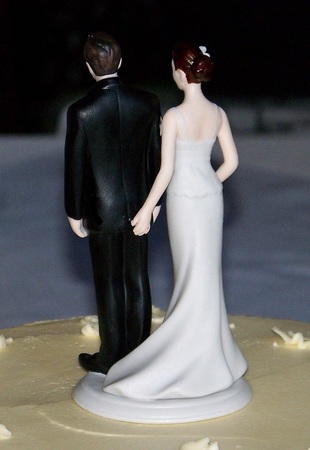 My husband and I celebrated our sixth wedding anniversary this weekend. This also roughly coincides with our ninth anniversary as a couple. We have made a ritual out of going to Las Vegas, where we have as much fun as possible, while also doing a life review and making plans for the next year. Most of this is done while hanging out in the pool and listening to pop music. A very solemn occasion, I can assure you. One of the things we talk about is the great mystery of why, whenever we go on vacation, we encounter so many couples in the midst of bickering or nasty fights. One would think all parties concerned would be happy to have some time off, at least. No cooking, no chores, no commute, plenty of time to sleep in… What’s not to like? You can almost spot the married couples by how much they seem to irritate each other. We call it “getting sloppy.” It’s like there is a tacit agreement that the basic manners, courtesy, and kindness we would show to a stranger off the street can be suspended around the person with whom we spend the most time. That, and we slide down the slippery slope of selfishness, ceasing to realize how mean we can sound. Example: A young couple in a changing room. She tells him, “You haven’t looked good in anything all day.” Neither of them may have taken it in the peevish tone we heard. There had to have been a more complimentary way to express the idea that ‘a better shirt is possible for you.’ She might have been sweet to him if he was a generic customer and she was the clerk. But I digress. Part of the reason we enjoy each other’s company is that we take this marriage business very seriously. Marriage is many things. One of those things is a set of responsibilities. Another of those things is a highly personal and intimate contract between people who answer only to each other. That’s where the 100 Questions come in. If you hadn’t yet realized that I am a Questioner, you will now. The 100 Questions were my idea, although we devised them together. We had been together for two years and we were feeling pretty serious about each other, yet we were both bitter divorcees and thus wary of the whole prospect of legal/financial commitment. We agreed that we would make a list of questions we wanted to know before we took things to the next level. This took a week or two. Our list has an edge to it. Another couple might choose different questions, or make a longer or shorter list, but after reviewing it, I’d do it again the same way. The trick to going through the 100 Questions was that we each had to do two sets of answers: Our own answers, and what we guessed our partner would answer. Then we went through the list one at a time, sharing our answers and our guesses. That was extremely revealing. We probably got roughly 80-90% correct, but some of the inaccurate guesses were unflattering and a little depressing. “Like, why would you think I would think that?” The positive side of this practice was that we were able to correct each other’s flawed impressions to our mutual benefit. We’ve always talked about everything, from gossip to deep philosophical questions. It takes trust. It also takes a sense of humor. Nobody really wants to talk about issues like living wills or what to do if one of us becomes maimed or disfigured. It seems like a good idea to discuss them at least once, though, during the course of what is meant to be a lifetime partnership. This weekend, we went through a different list of questions. These are 36 questions that are supposed to facilitate intimacy. According to legend, various couples have started out as total strangers and wound up marrying each other after participating in this study. We blew off the suggested time limit and wound up spending closer to three hours on them over the course of the day. We did not do the four-minute eye contact exercise. The other thing we did was to think about five things we want more of and five things we want less of. This included a discussion about kitchen appliances and their accompanying malfunctions. Because, you know, a lot of intimacy looks like that: boring quotidian details that are the mortar between the bricks of life. Here are our 100 Questions in all their intimidating glory. 1. Why did you get married last time? 2. What did you like about your previous marriage? 3. What did you dislike about your previous marriage? 4. What was the worst thing about your divorce? 5. What would your friends at work say if you announced you were getting engaged? 6. What would your family say? 7. Can you think of anyone who would have objections if you married again? 8. What problems do you think getting married would solve? 9. What problems do you think getting married would cause? 10. What problems do you think “shacking up” would solve? 11. What problems do you think “shacking up” would cause? 12. What regrets would you have if you got married again? 13. What regrets would you have if you never got married again? 14. What is your biggest fear about aging? 15. What are the compromises you think you would have to make if you “shacked up” with someone? 16. What are the compromises you think you would have to make if you got married again? 17. What do you feel you have to offer as a marriage partner? 18. What do you think are the flaws that make you hardest to live with? 19. What are your biggest pet peeves? 20. What are your deal breakers? 21. How do you prefer to resolve conflict? 22. What would you do if you began to feel dissatisfied in your relationship? 23. Under what circumstances do you think therapy is appropriate? 24. How often do you think is appropriate to have sex? 25. What would you do if you and your partner wanted different amounts of sex? 26. What would you do if you had sexual desires for things your partner did not find exciting? 27. What are your expectations about your partner’s physical appearance? 28. What are your expectations about your partner’s fitness level? 29. Is there anything you think you would do as a married person that you don’t do now? 30. Is there anything you do now that you wouldn’t do if you were married? 31. Is there anything you haven’t yet done that you would regret if you got married? 32. List the benefits of “shacking up.” 33. List the benefits of getting married. 34. What does ‘engagement’ look like to you? 35. What does a ‘wedding’ look like to you? 36. What kind of dwelling do you want to live in? 37. What kind of dwelling are you willing to live in, assuming sometime in the future you will live somewhere else? 38. Where do you ultimately want to live? 39. Is there any living situation you would refuse? 40. What type of décor do you prefer? Furniture, colors, art, etc? 41. Is there anything that should not be allowed in the house? 42. How do you think household chores should be divided up? 43. What is your least favorite household chore? 44. How would you solve the problem of people living together with different standards for cleanliness? 45. Do you plan on making changes in your career? 46. Do you plan on making a significantly different amount of money in the future? 47. Under what circumstances do you think one partner could quit working? 48. What would you do if your partner could no longer work? 49. What do you think is the best way to divide household expenses? 50. What do you think is the best way to manage household expenses? 51. What is the appropriate amount to save, both by percentage and as a gross total? 52. What is the appropriate amount of consumer debt for a household? 53. What is an appropriate credit card purchase? 54. How do you think debt should be managed? 55. When is it appropriate to lend money to a family member? 56. When is it appropriate to lend money to a friend? 57. How much do you think is appropriate to give to charity? 58. What are your opinions on step-parenting? 59. How do you think discipline issues should be resolved with children? 60. Do you think children should receive an allowance? 61. How would you plan to pay for a child’s college education? 62. What do you think is an appropriate amount of time to spend with extended family? 63. How do you think holidays should be spent or divided? 64. How do you believe vacations should be spent? 65. What do you think of separate vacations? 66. How do you resolve issues with an extended family member? 67. What are your opinions on appropriate gift-giving, amount to spend, etc? 68. Which extended family members do you think should receive cards or gifts? 69. Whose weddings and funerals do you feel obligated to attend? 70. How long do you think a family visit should be at their home? 71. How long do you think a family visit should be at your home? 72. How much time in a given week or month would you like to spend with friends? 73. How much time do you think your partner should spend in a given week or month with friends? 74. Under what circumstances would you want to let a troubled friend stay in your home? 75. How long would you be willing to put a friend up in time of trouble? 76. How do you think conflicts with neighbors should be resolved? 77. What is your opinion on having friends of the opposite sex? 78. What is your opinion on your partner having friends of the opposite sex? 79. What would you do if you didn’t like one of your partner’s friends? 80. What would you do if your partner didn’t like one of your friends? 81. How much time do you want to spend on your hobbies? 82. How much time do you think your partner should spend on hobbies? 83. How much money do you think is appropriate to spend on hobbies, as a percentage and in a year? 84. Are there activities you expect your partner to attend with you? 85. How do you think partners should decide what entertainment to choose, i.e. what music to play or which movie to see? 86. How many pets and of what kind would you like? 87. Whose duty is it to care for and clean up after pets? 88. How do you think discipline issues should be resolved with pets? 89. How to decide when to euthanize a pet? 90. What are your plans for retirement? 91. What do you see yourself doing between now and retirement? 92. Is there anything you absolutely must do before you die? 93. How would you communicate concerns about any health issue you thought your partner was not resolving appropriately? 94. How do you expect your partner to behave if you become ill? 95. What would you do if your partner developed a long-term serious illness? 96. What would you do if your partner became physically disabled? 97. What would you do if your partner became mentally disabled? 98. What would you do if your partner became disfigured? 99. Who has the right to end your life if you are incapacitated? 100. What kind of funeral arrangements do you want?  This is a really cool book by two people who really know what they’re talking about. Peter Diamandis is the founder of the XPRIZE, and he’s also an MD with a bonus degree in aerospace engineering. Steven Kotler is a New York Times-bestselling author, among other things. In both cases, their bios go on and on and on, to the point where you start asking, “Is this the cumulative CV of everyone in your family, or did I miss something? Because how is all this humanly possible for one individual?” That’s what this book is about. Do everything that seems cool, work hard to make it all happen, and enlist other people. BOLD is not a motivational book. Well, it is, but it’s really a how-to manual. When they say “go big,” they mean “change the world, become a billionaire, keep going.” Lather, rinse, repeat. The world has changed really quickly, and now the bar is very low for someone from anywhere on the globe to get into any sort of business. It’ll happen at an increasingly rapid rate because better technology and communications are spreading as fast as they can go. The book begins with the concept that linear companies are being disrupted (read: made extinct) by exponential technology. Rather than sell doom and gloom about this pessimistic scenario, the authors make a solid case that exponential business creates growth and opportunity. I stopped and took a lot of notes while reading BOLD, because it kept introducing websites and online communities that I had never heard of, but appear to be thriving outside my awareness. Diamandis and Kotler are not making this stuff up. You can take an idea in any field, go online right now, and start turning it into A Thing. Crowdfund and/or crowdsource anything. Start your own online community. Create your own XPRIZE. The easy stuff includes getting your invention designed, built, and sold (quirky.com); designing t-shirts (threadless.com); and I’m tossing in one I just discovered, which is submitting your screenplay to Hollywood (blcklst.com). We’ve been at the point for several years now where nobody should be saying, “There are no jobs out there.” Create your own job! Who’s going to stop you? As a little treat, here are Peter’s Laws. http://www.diamandis.com/peters-laws/ 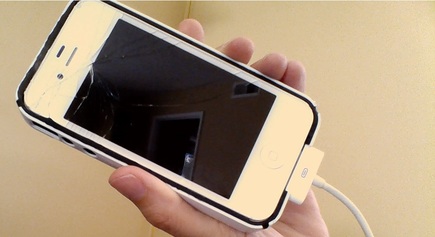 Travel anxiety manifests itself in different ways for different people. It’s quite common for chronically late people to run around doing random tasks, not realizing that they are subconsciously just trying to delay leaving. That’s only the beginning. I can’t shut the door on a dirty house, and I get anxious about being able to find anywhere to eat. My husband can’t stand being late, and he gets anxious about orienting himself and finding his way around. Money! Time zone changes! Strange beds! Thieves! Foreign languages! Germs! Shouting hotel neighbors! Flat pillows! The travel fantasy is so full of stressors that it’s funny so many of us love it so much. Practice and planning help with the inevitable hassles. Between the two of us, we’ve gone on at least a dozen trips in the past year. That includes international business trips (for him), family visits, vacations, and quick weekend getaways. Sometimes both of us are away at separate locations. Because our suitcases get pulled out of the closet so often, it’s much harder to ignore travel anxiety as a factor. (Especially for our pets!) I grew up in the travel industry. The first time I flew alone, I was 7. We flew standby as a family every summer. I’ve spent the night on the couch in a breakroom and waited 9 hours to catch flights. I’m pretty much unflappable about travel delays. ABAB – always bring a book! I also have a very lackadaisical attitude about how long it takes to get through security or run from one gate to another. In my lifetime, I have never been so late that I missed a flight. It will probably happen one day, through factors outside of my control. This doesn’t bother me all that much. As long as I have wi-fi access, I can do virtually everything from an airport terminal that I could be doing at home or at the destination. *shrug* I trust the highly skilled network of airline professionals to help me resolve anything that comes up. It is easy to see how incredibly frustrating my “wing it!” travel style could be for most people. I don’t share your sense of urgency. I can only pretend to. It’s much like the time I fell out of a sea kayak, got tangled in the oar ropes, and panicked that I was drowning – even though I was wearing a flotation vest and we were only yards from shore. I was flailing in a blind panic, the only person around who didn’t realize everything was going to be perfectly fine. Now, I have plenty of travel anxiety issues. One of them is going through secondary search at the airport, which is why I went through the effort of becoming a trusted traveler. Another is trying to find food at old-school airport terminals. LAX is trapped in the 80s as far as plant-based options. (Who puts CHEDDAR CHEESE in a HUMMUS WRAP?) The last time we were there, we had to search three different concourses to find one single food vendor that had one single item I could eat. By the time we sat down with our food, I couldn’t even give the acceptance speech for my Most Annoying Travel Companion award. The worst part is that the whole reason I had to find food in the terminal is that I was too busy obsessively cleaning house to pack my usual emergency sandwich. The point of talking about travel anxiety is that when we call it out, we can defeat it. Planning and preparation can help avoid most issues, and knowledge can help with others. (For instance, knowing that flying is statistically far safer than driving, and it’s irrational to be stressed out on a plane unless you are significantly more stressed out on the freeway). It’s hard for me to relax on a trip if I know I’ll be going home to a dirty, disorganized house and a long list of urgent tasks. I’ll just perseverate about everything that needs to be done. It is deeply satisfying to me to do the final perimeter check before going out the door, knowing everything is in order. It also helps avoid forgetting important small items. We do the same thing when checking out of a hotel. Peace of mind! The sticking point for me is that, while my housekeeping routine is designed around having free weekends, I usually have until the afternoon to get everything done. Also, on an ordinary weekend, I don’t have to worry about the fridge, compost bucket, or garbage having a week or more to rot. After our last trip, I spent some time going over my strategic plan. I realized that all I needed to do was to push back my travel prep by two days. Same total minutes of work, completely different results. I’m writing this while preparing to leave town later this evening for a weekend trip. I know everything is done, and yet the space available for travel anxiety is not full. I keep chasing my mental tail, thinking that surely I must be forgetting something! My suitcase is packed and waiting by the door. All the laundry is done, the house is clean, and there’s nothing in the fridge but my lunch and a few apples. In the last week, I’ve even done all the deep cleaning: the windows are washed, the top of the fridge has been dusted, and the upholstery has been laundered. My next task is to start trusting in my checklist, and enjoying the benefits of automation. This is how minimalism brings everything together: Automated finances = ability to keep household running during chaos of frequent travel Capsule wardrobe = uncomplicated packing; a small, lightweight bag; no extra fees; physical agility Housekeeping routine = leaving, thus coming home to, a clean house; being able to find stuff Meal planning = consuming produce while it’s fresh instead of coming home to a scary fridge full of compost (still working on this one); maintaining desired weight in spite of restaurant meals (nailed it) Location-independent work = working if/when I feel the urge Now my prefrontal cortex somehow just has to get the signal through to my amygdala. There really is nothing to worry about. Nothing except flat pillows, anyway. 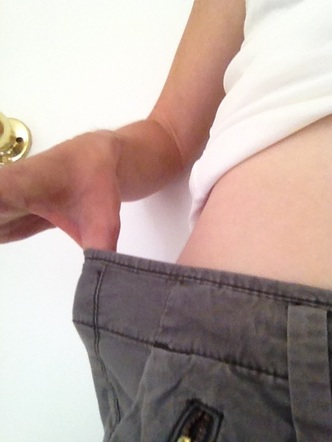 I think it’s pretty clear I ain’t no size two, ‘cause when I shake it shake it, my pants start falling off. I’m a nerdy, middle-aged suburban woman who wears sub-zero clothing. In my world, that ought to mean clothes that keep me warm in the winter. Au contraire, mes amis. Let me tell you what it’s like. What I want out of the fashion industry is pretty straightforward. Call it business casual. I want flat shoes, natural-waist pants, knee-length skirts, shorts that cover my entire caboose, and tops that cover my entire bra. I prefer that it be assumed I am in the practice of wearing undergarments, without displaying them for all to see. I’m not a bluestocking. As far as I’m concerned, public nudity is a-okay, as long as it’s intentional. Which my accidental flashing of my entire naked breast in a restaurant the other day most assuredly was not. I have a young friend who is probably engaging in ritual self-mutilation at this very moment, in a feeble attempt to bleach the sight of my sundress malfunction from his mind. (The label says Size 1, by the way). My narrow shoulders cannot accommodate loose straps any more than my flat marathon runner’s butt can hold up a loose waistband. All those signs reading PULL UP YOUR PANTS? I know they’re aimed at me. Despite what most people would guess, my body image is quite good. I won a lengthy battle with fibromyalgia and thyroid disease, and every day I appreciate my strength and energy level with full force. I like having visible muscle definition. I have never been “skinny” and I am definitely not “naturally lean.” I’m just… small. But not small enough. I’m at least two inches too tall to wear petites, with a long waist, long arms, narrow shoulders, short legs, big thighs, and more bust than fashion designers expect. Put it this way. For the first time in my life, I look better naked than I do dressed. Nothing fits me. You think I’m exaggerating? Let me Google some size charts for you. Target: size 0/2 bottoms. Waist 26-26.5. Hip 36-37. Sears: size 0. Waist 25 ½. Hip 35. (Same as KMart) JCPenney: size 0. Waist 25 ½. Hip 35 ½. Walmart: starts at size 2. Waist 24 ½. Hip 35. LL Bean: starts at size 4. Costco: starts at size 8. My measurements are 34-27-34. According to the size charts, I should be able to fit in a 0 at Ann Taylor (see above photo), the Gap, and Old Navy, and a 00 at Banana Republic. In practice, those size 0’s are too loose. I tried on several size 0 garments at the Banana Republic store yesterday that were too big, and a very sweet employee directed me to the website, where I found… five styles of pants. Period. They don’t carry a 00 in the store, and I guess it’s not a big seller online either. Most 00 stuff is designed for truly skinny body types, not for athletes with bulky hamstrings, adult hips, and a BMI of 20. There is a dividing line between extra-small clothing and average-size clothing that is at least as vivid as the scene change from sepia to Technicolor in The Wizard of Oz. The women’s section has everything I want: modest, classic clothes that cover my stretch marks. Their “XS” is equivalent to about a size 6. The extra-small section (see H&M, Forever 21, Macy’s, and Nordstrom) currently has biscuit-bottom shorts, racer-back baggy tank tops, miniskirts, “pants” that were called “leggings” in my day, beachwear, and a broad spectrum of completely transparent tops, mysterious cutouts, and distressed denim. Good luck finding a single item that would be suitable on an airplane or in a nice restaurant, much less anything that would meet any office dress code. I can choose between “teen character actor” or trying to duct-tape age-appropriate garments onto my body. Which I’ve considered. But this is a hot climate, yo. That gives all new meaning to the concept of “tacky outfits.” Caring friends have advised me to wear children’s clothes (because Dora the Explorer has a new business casual line) or men’s clothes (because there are so many more men who are 5’4” and weigh 120 pounds – problem solved!). Really, though, nobody gives a flying leap about my problem. I Googled “size zero” and found a Wikipedia article that indicates a 3” range in clothes labeled “size zero,” explicates “criticism” and “movement against size zero,” and then stops without indexing places one might purchase said clothing. The remaining first-page results are all about a size-zero woman who got liposuction, except for one article about size inflation called “Congratulations! You are a size zero!” I looked up “size zero fashion” on Pinterest. Much to my astonishment, what popped up was “curvy” and “plus-sized,” with a certain amount of disparagement for small women. “Does anyone really look like this?” and “Anorexia is a disease it is NOT a fashion statement”. You think people body-shame you? Evidently my clothing size gives people the right to assume I’m mentally ill. I have just as much right to buy clothes that fit as anyone else. But capitalism is failing me. There is no market for the products I want to buy; therefore, they don’t exist. I’ve been online, and I’ve only found one brand of underpants that fit me. Even on Amazon, I’m off the bottom of the size chart for almost everything. I used a tape measure, ordered a sundress that should have fit, and the smocking… didn’t stretch. My options at this point are to keep returning most of my online orders, make my own clothes, pay for someone else to do it, or wear vintage. (I’m the same height and weight as Betty Grable, although Grable’s hips were an inch bigger and I’m bigger by 4” in the waist, 3” in the thigh, 2” in the calf, and ¾” in the ankle. Nobody seems to think she had an eating disorder, even with that tiny waist and those slender legs). My long-suffering husband, who has been my companion in clothes shopping over the last decade, is threatening to take me to London, where I would be a size 6. In other parts of the world, my build is perfectly normal and average. My “size zero” issues aren’t just a First World Problem – they’re almost exclusively an American problem. Correction: a Unicorn-American problem. 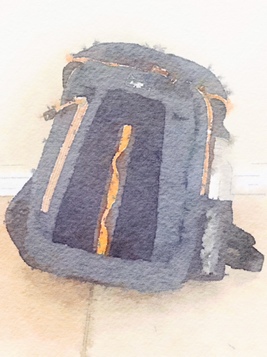 A conspiracy theorist could make a solid case that there is a mass cabal of chiropractors seducing people into carrying the heaviest possible bags everywhere. The same conspiracy can be demonstrated with laptop advertisements, which are all like public service announcements about poor ergonomics. High heeled shoes are a tangent all their own. Sit in any coffee shop and an astonishing array of bulging satchels, drooping backpacks, and enormous handbags will be displayed. Sometimes it’s hard to tell whether a particular bag is supposed to be a purse or a diaper bag. Some people, mostly women, will have two or three separate bags. What on earth are we carrying in there? In college, I carried a huge tote bag that I called my filing cabinet. It had my textbooks, notebooks, and flash cards for the day. It also had my day planner, library book, wallet, keys, pens, lip balm, lunch, hat, gloves, scarf, umbrella, mini flashlight, folding scissors, a whistle, paper napkins, crumpled receipts, mail, business cards, and whatever other detritus I felt I had to have with me. My attitude was to bring everything “just in case.” Since my bag was so big and so full of so many items, stuff would tend to get lost in there. It was like a black hole. Everything got sucked into its gravitational field and nothing ever got out. Things gradually changed after I got a smartphone and became a distance runner. I would set out to run for two hours, and realize that all I needed was my house key and my phone. I would put my ID and a debit card in my phone case for emergencies, but in practice I never needed them. My comfort level built as I realized that my phone, key, ID, and debit card were all I needed at least 80% of the time. Not carrying a purse became my default; it was something I only used for special occasions when I wouldn’t have pockets. (Speaking of conspiracies, why do most women’s garments lack pockets? It’s like we’re samurai). My distance running segued into backpacking. There is a big swing between carrying 6 ounces of personal items and carrying 1/3 of your body weight, unless you happen to be a gecko, in which case, Hello! The point of backpacking is to bring everything you will need for physical survival over the length of the trip. It’s exciting, because you can reach pristine, staggeringly beautiful remote areas that otherwise can’t be seen. It doesn’t take long to figure out that clutter has a higher price in a trekking pack. Every ounce of junk is a tradeoff for an ounce of food. Lack of discipline punishes the knees. Backpacking builds confidence in how little we truly need for survival, comfort, and even luxury. We have “go bags” for ourselves and an extra one for our pets. They’re grouped on a shelf where they will be easy to reach if we ever need them. My husband experienced the 1994 Northridge Earthquake, and had to leave town for a few days until water and power were restored. Where we live, it’s sensible to be prepared for earthquakes, wildfires, flash floods, and mudslides. There’s about a 1:3 chance that we’ll be asleep when the need to evacuate occurs. We want to be able to grab the pets in their crates and get them out safely. There won’t be time to rush around grabbing anything. There won’t be any way to carry armloads of extra stuff, either; not without risking the loss of our panicked critters. It’s not the probability of an event like this that’s important, so much as the level of risk if it ever does. Our relationship to material objects can be pretty weird. The things we carry every day are often talismans rather than functional tools. We think we’re making our lives easier because we’re prepared “just in case.” That sense of preparation can be an illusion when we’re unprepared for real trouble. We burden ourselves for the sake of a sense of security that should perhaps be gotten by other means. 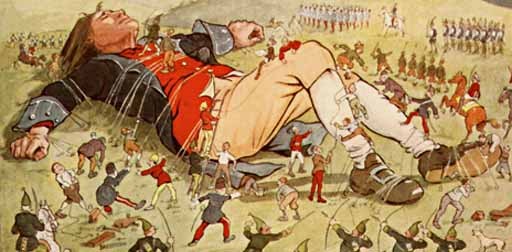 There is a picture of Lemuel Gulliver hanging on the wall behind the check-out counter at my local library branch. (From Jonathan Swift’s never-out-of-print classic, Gulliver’s Travels). It’s the scene where he wakes up on the beach and finds that the Lilliputians have tied him to the ground. Although the threads are fine, there are so many of them staked down that he can only free one arm. They’ve even tied his hair. He’s so ensnared that he can’t even roll over to pee. The Lilliputians shoot him with arrows, threaten him with spears, drug his wine, and finally replace his ropes with chains. None of this was meant as an allegory about the mundane details of life, but... These are the ropes that tie us down: Sleep deprivation Debt Clutter Disorganization Health problems (one rope each) Poor eating habits (one rope each) Dehydration Procrastination Toxic relationships (one rope each) Uninspiring work Creative blocks Emotional baggage Addictions Boredom Chronic complaining This is why habit change can be so discouraging. It can take a lot of effort to snap a thread. But after all that work, all the other threads are still in place. Not sure about you, but I have definitely felt so stressed and overworked that I couldn’t even find time for a pee break! I have also felt that gloomy sense of 100 arrows pointed my way if I tried to make a break for it. Dire circumstances indeed, especially when we consider that “falling back to sleep” might lead to those cords being replaced with chains. Habits do chain us and they do start at a scarcely perceptible gauge. They start when we aren’t paying attention. Gulliver falls asleep after drinking a half-pint of brandy. Clearly, he has no idea that he will be captured with all these binding cords. It’s just that he relaxes his guard and stops paying attention, even though he’s in a vulnerable place. This is perfectly understandable, considering that he is the sole survivor of a shipwreck. Trauma and exhaustion, don’t you know. Nobody can blame him for what happens to him. He didn’t ask for it. Trouble often leads to more trouble in this manner, though. It’s the same way for us non-fictional, ordinary humans. We turn to mediocre or ineffective coping strategies when times are hard, and they often lead to further problems. What do we do when nothing is really going very well? When we’re burned out and exhausted and we feel unsupported? When we’re broke and having health issues? When we’re out of shape and disorganized, yet we also need to find a better job? Where do we even start? Which thread do we try to snap first? The first key is to recognize that all these threads are the same: obstacles that hold us back and prevent us from moving forward. It doesn’t really matter which one we break first, because they’re all going to have to go. Gulliver gets his left hand free first, though it happens more or less by accident. If his right hand had been loose instead, it might have gone differently. That translates to focusing on whichever negative force will make it easiest to work on the others. In my opinion, the first cord to break is the sense of futility and resignation. Learned helplessness teaches us to keep trudging along, tolerating the intolerable. We don’t know our own strength. We don’t always realize that all we have to do is to sit up quickly, put the smackdown on the mean little spear-carrying Lilliputians, and start walking. We are much bigger than our problems – even when there are 40 of them and only one of us. Next in my opinion are disorganization and sleep deprivation. Those become simple when we have a clear sense of purpose and when we let go of the desire to distract ourselves late at night. We keep trying to buy ourselves a bit of cloud real estate where we can escape the world. Daydream time for real dreamtime. The truth is that it’s impossible to enjoy anything when we are chronically short on sleep, and we don’t realize how true this is until we start getting enough. Getting enough sleep improves focus and willpower, gives us more physical energy, helps fight chronic pain, and helps eliminate food cravings. Plus it’s free! We start to feel as though the other things holding us back maybe aren’t quite as serious as we first thought. When Gulliver gets free, he eventually goes on to travel the world, come home again, and start hanging out with his horse a lot. Not such a bad ending. Many of us would do the same, once it crosses our minds that it’s possible.  This post is a real-time exploration of a topic that is new to me, in this case, a “product development strategy” called scrum. I want to explore this new concept on its own merits. I also want to demonstrate the way my information-gathering process works. I’m a divergent thinker, so my mind races off in all directions, most of which may seem irrelevant or ridiculous to someone who is better informed. As I learn more, my focus starts to contract again, until finally I have a solid understanding of the subject. My learning curve is a very long, flat line, with a suddenly steep ramp way off at the end. Why would the average person, a person who does not develop software, care about a “product development strategy”? I have a suspicion that this thing called scrum echoes a seasonal work rhythm that would be a natural, practical fit for most people. I think it could be even more valuable for an individual working on personal projects than for a working team. In a nutshell, the way I understand scrum to work is that one person owns the project, and the team works together to break it down into a task list, called a “product backlog.” The list is broken down further into a “sprint backlog” – work that needs to be done in a sprint, usually two weeks but not more than a month. Each person chooses a task that suits his or her skills and interest. Everything must be completed by the end of the sprint time period. In software, this is when they “ship it.” Then it’s time for another sprint. Anything else that needs to get done, but realistically can’t/shouldn’t be started until after the current sprint, is added to the product backlog. The team meets for a 15-minute “scrum” every day to report progress. How would this work at home? Let’s say I’m trying to “get organized” and my house is cluttered and in need of a serious spring cleaning. I’ve got this passel o’ kids/roommates/pets who may or may not be on board. Where do I start? I can break down the areas of the house into two-week sections, and work only in that area until it’s done. If I can’t convince anyone else who lives with me to help out (or at least stop being afraid of the vacuum), at least I can ride herd on them and keep them from adding more clutter in that sprint’s focus area. Gradually, the clean and organized portion starts to spread, until finally the whole house is done. I can schedule a party on a specific day so I have a built-in deadline. Let’s say I’m trying to “get in shape” and I’m overweight and I have no idea what I’m doing. (Purely hypothetical, of course. I was born in a gymnasium with a free weight in each hand. Weren’t you?) I can set a small goal that I aim to reach in a two-week time period, and pause for analysis at the end of the sprint. If I didn’t meet my goal, I can crunch numbers and try to figure out what happened. #1: Figure out where the gain came from. #2: Stop gaining. #3: Get used to what maintenance feels like. #4: Lose some weight. #5: Adjust to how physical changes can trigger emotional changes. Two weeks is a short enough period to make course corrections, and also a long enough period to see a trend line start to emerge. If the trend line is not sloping even a tiny amount after two weeks, there is a flaw in the plan somewhere. Let’s say I’m a writer/artist/Maker and I’ve got a bunch of unfinished projects. I can plan a sprint and a hard deadline for each one. At the end of a sprint, I can look at my work basket or my table or my draft folder and get a better sense of how much I can realistically produce in a set time period. When I decided not to take on any further craft projects until I had finished everything I had currently planned, it took a solid ten years. In fact, I’m still working on the last one. (It wasn’t until I got to the tail end of all these crafty things that I started writing; the response to my writing has been far better than the response to any particular hat or scarf or children’s toy I ever made). This is my novice understanding of scrum. Next, I’ll read a couple of books and a bunch of articles on the topic. Either this will help me to understand something really cool and useful, which is great, or I’ll realize I had no idea what I was talking about, and I’ll revert to my own warped ideas and lose interest in the idea that originally caught my attention. That’s fine, too. It happens. I’m finding that the idea of establishing a production schedule longer than a week and shorter than a year is really attractive and helpful for me at this time. Maybe it can help other people, too. 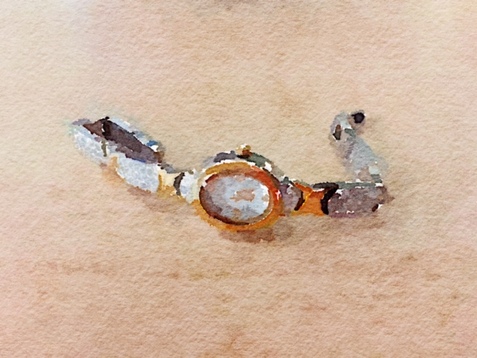 UUUGGGHHHHHH I don’t want to do it Well, I do want to do it, but later I just don’t feel like it In fact I’ve never felt like it I’m not sure what “feeling like it” would actually feel like But I know it’s not like this Because I REALLY DON’T FEEL LIKE IT If I do it right now, it will not feel like feeling like it is supposed to feel Can I do something else instead? There are other things I usually never feel like doing But SUDDENLY they seem like a great idea I could clean out that closet! I could wash the dishes! I could catch up on my email! Then I’ll finally be organized And maybe I’ll feel like doing it Or maybe tomorrow Because I really need a treat right now WAIT I’ve been here before I can’t just reward myself for procrastinating It’s like I’m training myself to postpone stuff longer and longer “SIT! Good brain” What if I just… did it? Even though I don’t want to? What if I just got started? … LATER … I’m doing it! I’m actually doing it! It’s really not so bad after all Not sure why I thought it would be such a big deal But I sure wish I’d started sooner Look at me, getting it done … LATER … I’m done! Well, alrighty then. 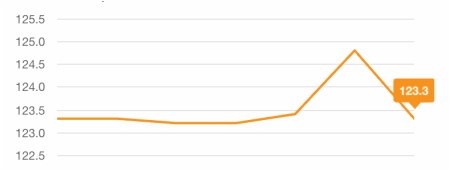 I used to believe that fitness came from two sources: Good genes or exercise. I also believed that people only played team sports because they weren’t smart enough to do anything else, and that people only went to the gym if they were vain. I believed that I personally couldn’t go to the gym, even if I wanted to (which I didn’t), because I had fibromyalgia, and all the books and doctors and research agreed that FM patients are exercise-intolerant. Therefore, I was the size I was, that was how it was going to be, the medical establishment backed me up, case closed. Density = destiny. Now, I’ve lived the following combinations: Fat, ill, and sedentary Fat, somewhat okay, and active Fit, healthy, and active Lean, healthy, and sedentary [But I have never been thin and ill]. I haven’t been to the gym in five years. I ran a marathon last fall, but all I’ve done throughout 2015 is walk short distances and do some light yoga and physical therapy. The majority of days this year, I haven’t even done those things; I’ve sat on my patoot holding an ice pack. I weigh slightly less now than I did during the months I was running 30 miles a week. I’m in the same clothing size that I was before, during, and after marathon training. It’s clear to me that weight, size, and body fat are all the result of food intake, based on the data from my food log. I’ve been careful to track my diet and activity level since January 2014. I know I don’t have “superior genes” leading to a “naturally lean” physique. If that were true, it wouldn’t have taken me until age 39 to become lean and fit. Also, there would be more lean people in my family tree. (Not going there, but we have photo albums dating back to the tintype era). Then there’s the issue of the thyroid disease I suffered in my early 20’s. I had a thyroid nodule, and my hormone levels were at the extreme low end of “normal.” All the objective, measurable data indicate that my “set point” [snort] is “curvy.” I have “birthin’ hips.” Or at least I did. Now I’m a little bitty sub-zero and people tell me, “I can’t picture you ever being fat.” And, “You were obese?!” Let’s look at some data. Here is my progress chart from MyFitnessPal for the week of 8/9/2015 – 8/15/2015. I weighed the same on Saturday the 15th as I did on Sunday the 9th. My weight was the same within 2/10ths of a pound all week, with the exception of Friday the 14th. What happened? Here is a screen shot of part of the activity data from my Apple Watch. We see that I won three separate activity awards. I walked almost 6 miles. I doubled my target movement/calorie-burn goal and exceeded my exercise goal by 50%. Although the data don’t show it, I also climbed about 8 flights of stairs that day. I worked out SO MUCH – why did my weight go up a POUND AND A HALF the next day? Ugh. That’s so unfair. Last, here is a screenshot of the data from the Health app. It shows dietary calories and weight. We see that my calorie consumption spiked on the 13th, my weight spiked on the 14th, my calorie consumption dropped on the 14th, and my weight went back to normal on the 15th. On the low-calorie day, I skipped my afternoon snack and had cabbage instead of a potato with my usual lunch. What may be more interesting is the high-calorie day: I met a friend for lunch, and I got the smaller size of the “brown rice and vegetables” plate. I had a lemonade, but no refills, I had a Frappucino with soy milk and no whipped cream, and I had one cookie. Sounds reasonable? The lunch was over 800 calories and the cookie was nearly 400. Counting the Frappy, my caloric needs for the day were met even if I had skipped both breakfast and dinner. Which I didn’t. That’s just one day, granted. I have 20 months of data, though, and they support this trend. No matter how much I exercise, if I eat more, I weigh more. That includes days I ran 17 miles. My heaviest weigh-in in six months was the day after I ran my marathon (26.2 miles).
This is what happened. I spent three months on strict calorie restriction. I tracked everything I ate, and all my exercise, with meticulous attention. I figured out why I tended to gain weight, which was a combination of several behaviors. I quit those behaviors and found a daily routine that ended the problem. I eat the same breakfast, lunch, and snack almost every day. I’m careful to eat the recommended daily allowance of micronutrients, via food rather than jars of pills. I love exercise, but the lifestyle I live now seems to work regardless of whether I exercise for months on end, or sit on my caboose for months on end instead. Believe my words or don’t. My personal experience has been that no doctor or health professional has ever once mentioned my weight, my body fat level, my food intake, or my fitness-related activities. They certainly never have tested my blood for nutrient levels. It’s pretty straightforward to collect these data for yourself. There are various free web-based and smartphone apps to track food intake, or you can use a library book or $6 paperback. If your phone doesn’t already have a pedometer, you can get one at Target for $12, and/or a scale that estimates body fat for about $25. You may already have a tape measure, measuring spoons, and measuring cups. I’d say “there’s only one way to find out,” but actually there are many ways. Whatever data you collect, record them every day and then watch the trend line. Numbers are just numbers. Data are just data. There are no moral components to this. When my weight fluctuated between overweight and obese and back to overweight, my stress level fluctuated a lot, too. It was a relief to me to get some objective measurements, analyze the trends, and realize that it was within my power to influence these trends. I never realized that I had a choice, because getting fat was something that “just happened” to me. I became fat and unhealthy as an accidental result of factors I didn’t understand. I became lean and fit due to research, experimentation, focus, and applied effort. As it turns out, it’s a lot easier to stay this way than it would be to revert back to my former state. That’s what I want for everyone: an easier life.  You thought the spokesmodel was going to be me, didn’t you? Aww, that’s sweet of you. Actually, what I have in mind is a common feature of, ahem, “pre-minimalist” homes. When people are introduced to the idea of clutter, they immediately put forward their absolute favorite, most valuable, prized possession as an example of their personal belongings. I have antique furniture; therefore, I don’t have junk mail. I have art books; therefore, I don’t have old magazines. I have an heirloom quilt; therefore, I don’t have excessive amounts of craft supplies. I really, really love some of my stuff, so I’m quite positive there is not a single item in the house that doesn’t need to be there. It’s clutter as synecdoche: the part represents the whole. The hardest thing to understand about clutter is that it has nothing to do with the value of the item. It has to do with whether there is too much stuff for the available space or if it’s disorganized to the point that it interferes with normal activities. “Can’t see the forest for the trees” and all that. We grow accustomed to spending half an hour at a time looking for misplaced items. We get used to having to move bins and boxes to get to other stuff that we want. We aren’t even bothered when we have to tiptoe our way through the occasional narrow pathway, or turn sideways to get past something. Considering how 2/3 of the garage space in this country is kept, and the size of our storage unit industry, it would be fair to say that many of us must actually enjoy shuffling all that stuff around. We like being surrounded by nests of our things. It’s cozy. It makes a nice excuse for not socializing, too. Skeptics tend to suspect that someone wants them to “get rid of all their stuff.” That may be true, if it’s a roommate or other person whose life is being negatively impacted by it. There may be a legitimate grievance. But the goal isn’t to “get rid of” anything at all. The goal is to have useful, beautiful things that improve our lives. That means that anything that doesn’t meet any of those criteria needs to justify its existence. Obviously, the antiques and the art books and the heirlooms are earning their keep. They’re off the table. (Well, maybe not literally off the table… ) Part of the appeal of working with clutter is that it’s so fascinating the way people get emotionally attached to things. It can be pretty surprising what people pick. The watch from Pulp Fiction is understandable; the little kangaroo, though? Almost never do I see a prized object that someone else would care to have. The specialness of our clutter spokesmodels is visible only to us. That’s fine. It would be scary, though, if we felt that strongly about all of it. There’s a real vulnerability there. What if it breaks or gets stained? The physical possessions that concern me the most are the ones that I feel need to be protected, because it would be a major inconvenience (or worse) if something happened to them. I’m talking about my passport, my ID, my bank cards, and my phone. All of those items can be replaced; the inconvenience is having to worry about identity theft. Then, of course, there’s my wedding ring. I’ve never taken it off, and I hope to wear it to the end. But the ring is not my actual marriage. It’s just a symbol. There are no other inanimate objects in my entire house that rate that level of symbolism for me. Stuff is just stuff. We have to remember that what we’d go back to save in a fire or flood would be our kids and our pets. There’d be no time for anything else: certainly not for the books or the fabric stash. We can keep whatever we choose, knowing it’s fine to like it, but that what we feel for it isn’t love. |
AuthorI've been working with chronic disorganization, squalor, and hoarding for over 20 years. I'm also a marathon runner who was diagnosed with fibromyalgia and thyroid disease 17 years ago. This website uses marketing and tracking technologies. Opting out of this will opt you out of all cookies, except for those needed to run the website. Note that some products may not work as well without tracking cookies. Opt Out of CookiesArchives
January 2022
Categories
All
|
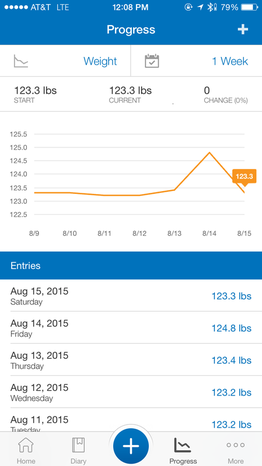
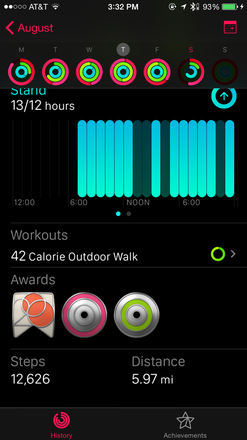
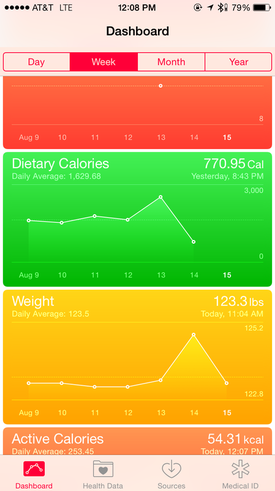
 RSS Feed
RSS Feed